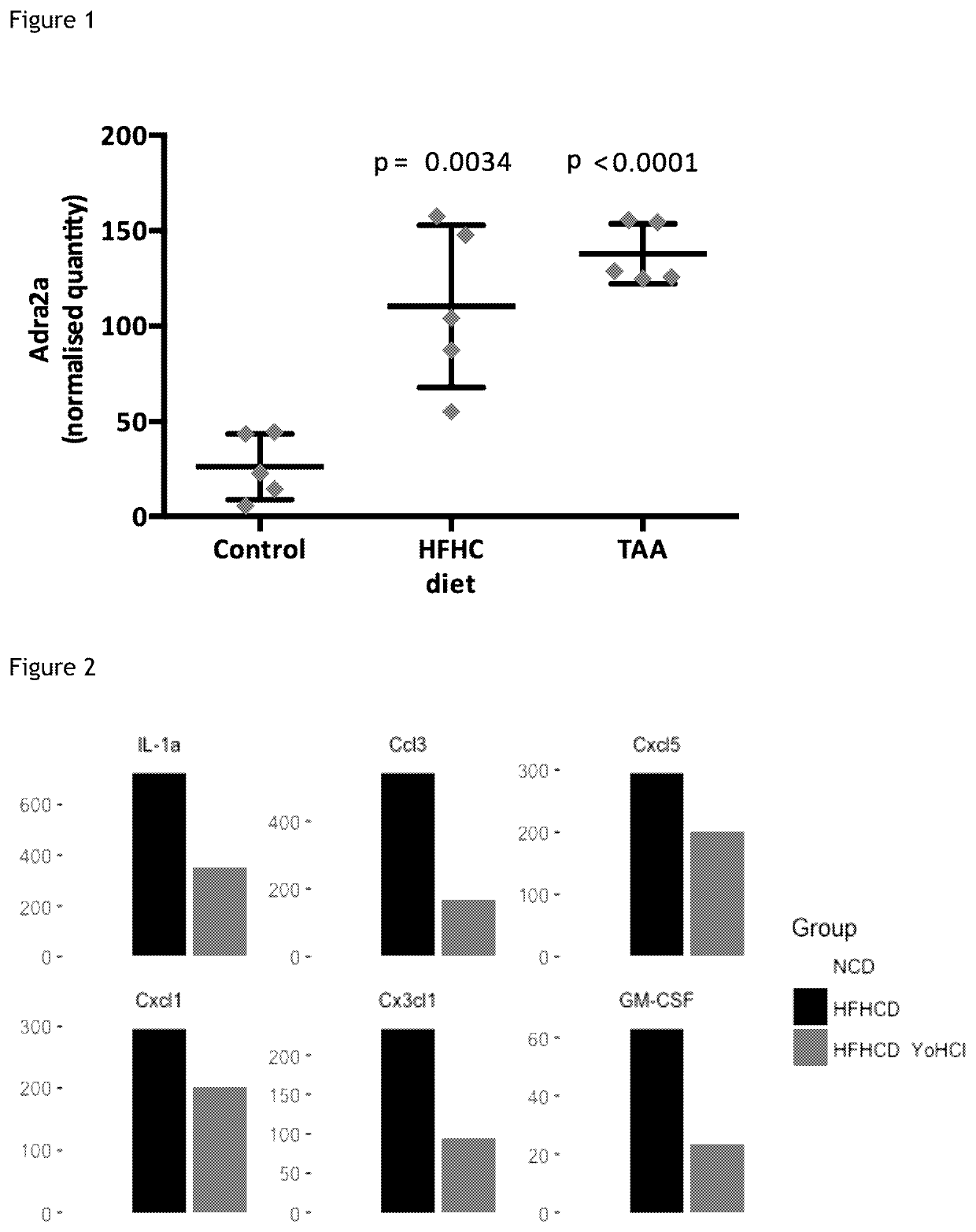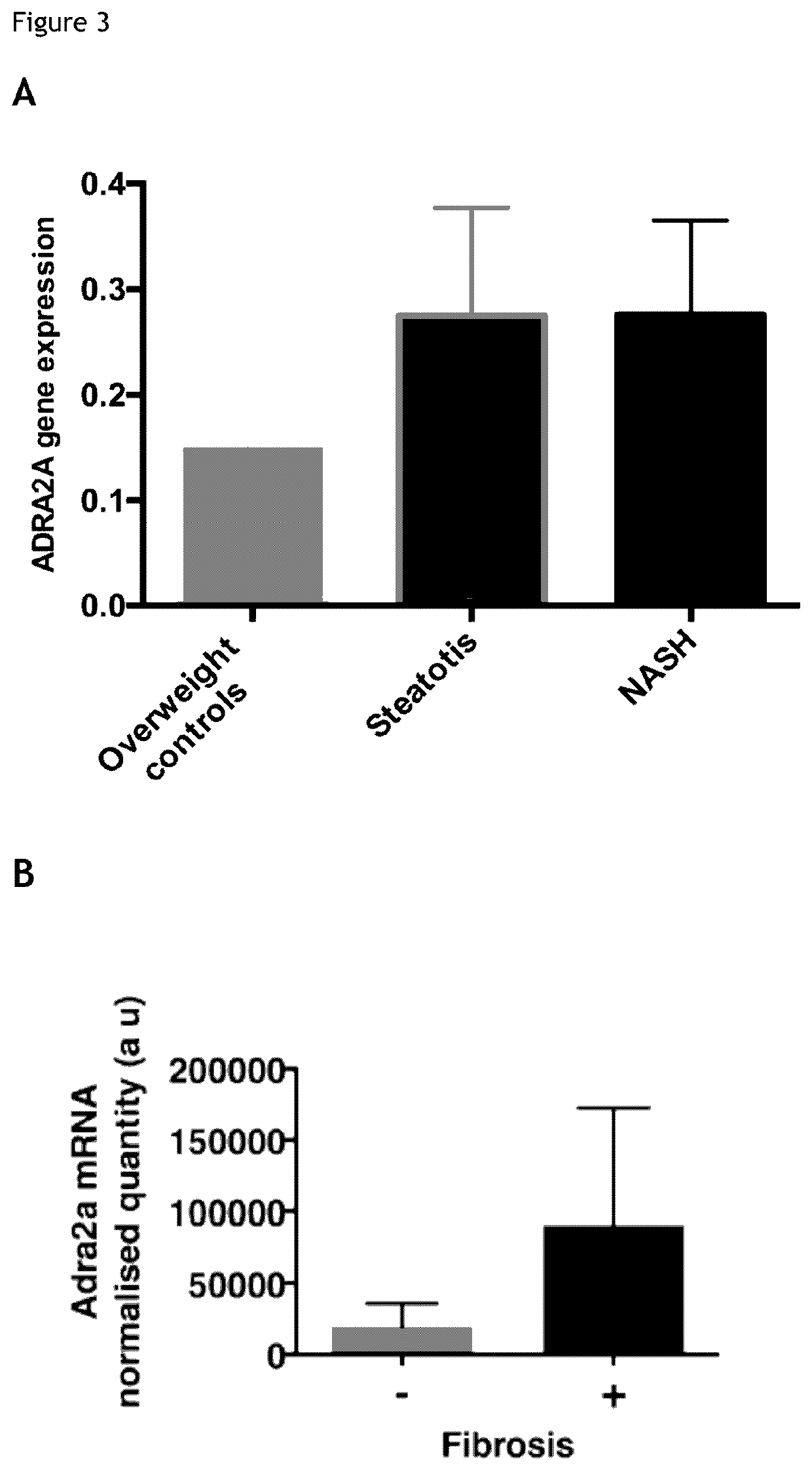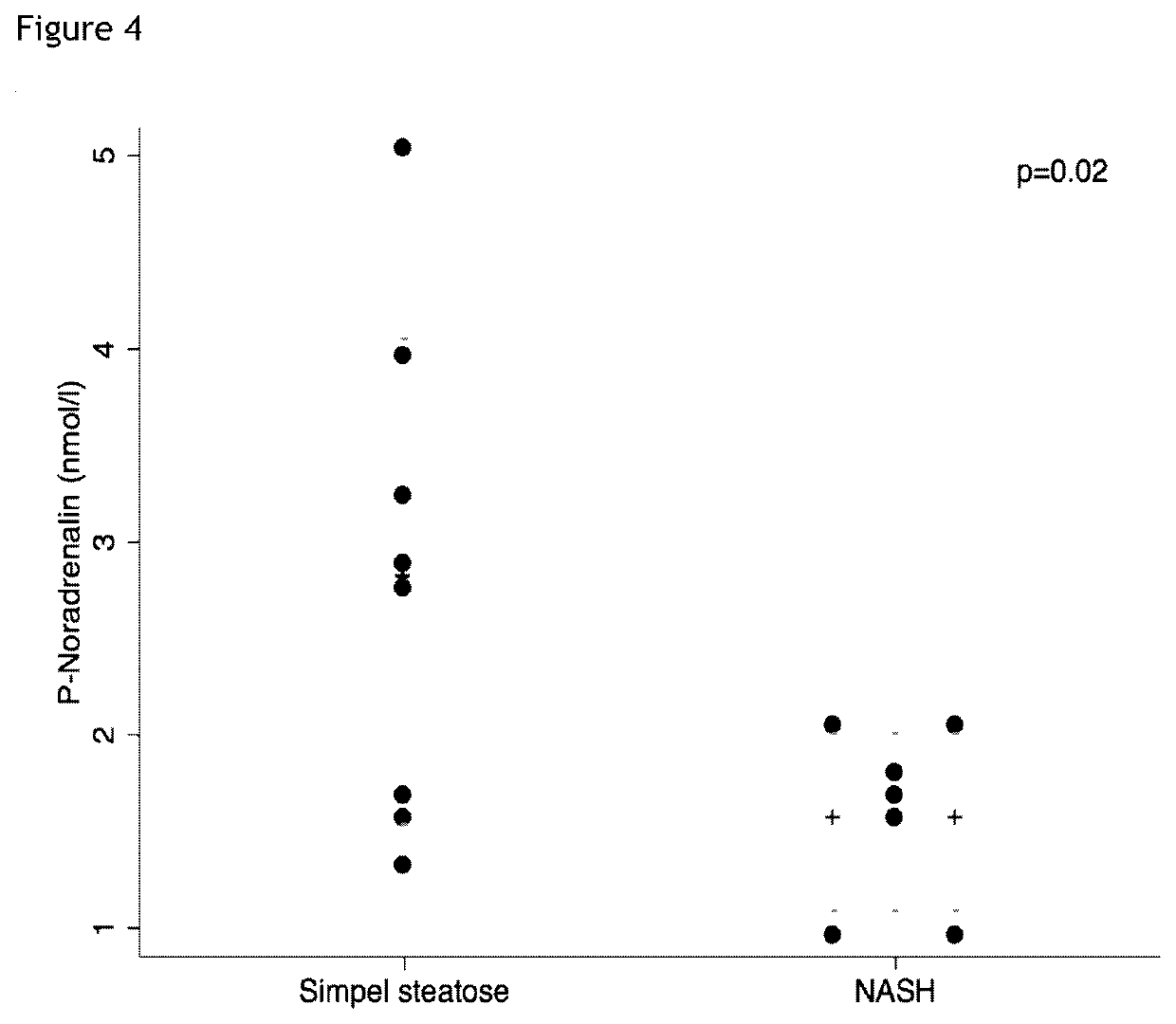Treatment
a technology for treating and reducing fibrosis, applied in the field of treatment, can solve the problems of increasing poor quality of life, and increasing the risk of liver disease progression and mortality, so as to reduce the activation and contractility of stellate cells, reduce the risk of decompensation and liver cancer, and reduce the risk of fibrosis
- Summary
- Abstract
- Description
- Claims
- Application Information
AI Technical Summary
Benefits of technology
Problems solved by technology
Method used
Image
Examples
example 1
[0145]Investigation into the expression of ADRA2α receptors in liver tissue (FIG. 1) found that ADRA2a expression is significantly upregulated in the livers of a rat model of NASH when fed on a high fat, high cholesterol diet, in contrast to control diet fed animals (p=000.34). ADRA2a expression was also upregulated in a further model of inflammatory-fibrotic injury (TAA).
[0146]Thus, upregulation of ADRA2a is associated with fatty liver disease and fibrosis progression.
[0147]It was also found that there was an increase cytokine and chemokine response in a rat model of NASH fed a high fat, high cholesterol diet (HFHC), in comparison to control fed rats (FIG. 2). The key upregulated cytokines are involved in the neutrophil chemotaxis and macrophage activation responses (FIG. 10), associated with a systemic inflammatory response and are modulated by the ADRA2a signalling pathway.
example 2
[0148]The levels of ADRA2a (FIG. 3) and noradrenaline (FIG. 4) were then investigated in patients with fatty liver disease with either NASH or steatosis. ADRA2A gene expression in liver tissue was upregulated in fatty liver disease patients with steatosis (n=6) and NASH patients (n=10) compared to overweight controls with no evidence of liver disease (n=12) (FIG. 3A). ADRA2A gene expression is also more markedly elevated in NAFLD patients with increased fibrosis scores compared to those patients with absence of significant fibrosis (FIG. 3B). Plasma noradrenaline levels were significantly reduced in patients with more severe liver disease (NASH) compared to simple steatosis. A likely explanation is that an increase in ADRA2a centrally acts to increase feedback inhibition of noradrenaline release from pre-synaptic neurons carrying ADRA2α receptors. However, increased expression of ADRA2a in the brain has potentially deleterious effects on cognitive function such as working memory, as...
example 3
[0149]The livers of rat models of NASH were then investigated to determine whether Yohimbine, an ADRA2a antagonist, could provide a therapeutic benefit for fibrosis. NASH rats fed a HFHC diet for 16 wks had a very fatty liver compared to Normal chow diet (NCD). The Liver-body weight ratio was restored with reduced liver fat upon treatment with Yohimbine for 8 weeks (HFHCD vs Control p<0.0001; HFHCD vs HFHCD_YoHCl p=0.014) (FIG. 5a). In the HFHC rats, after 8 weeks of Yohimbine therapy, there was a significant reduction in liver injury shown by decreased AST HFHCD vs HFHCD_YoHC (p=0.007) (FIG. 5b).
[0150]Representative Haemotoxylin and Eosin (H&E) stain of liver from control rats, from animals fed a high-fat high-cholesterol (HFHC) diet for 16 weeks and from animals fed a HFHC diet for 8 weeks followed by HFHC diet and Yohimbine hydrochloride for a further 8 weeks (HFHC+YoHCl) (FIG. 9, top panels). Amongst these groups, the 4 graphs shown (FIG. 9, bottom panels) represent the signific...
PUM
| Property | Measurement | Unit |
|---|---|---|
| temperature | aaaaa | aaaaa |
| temperature | aaaaa | aaaaa |
| temperature | aaaaa | aaaaa |
Abstract
Description
Claims
Application Information
 Login to View More
Login to View More - R&D
- Intellectual Property
- Life Sciences
- Materials
- Tech Scout
- Unparalleled Data Quality
- Higher Quality Content
- 60% Fewer Hallucinations
Browse by: Latest US Patents, China's latest patents, Technical Efficacy Thesaurus, Application Domain, Technology Topic, Popular Technical Reports.
© 2025 PatSnap. All rights reserved.Legal|Privacy policy|Modern Slavery Act Transparency Statement|Sitemap|About US| Contact US: help@patsnap.com



